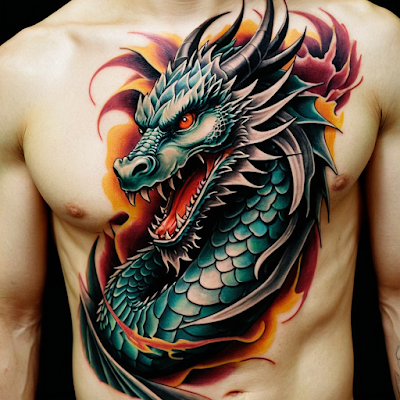Exploring the Evolution of Tattoo Design: From Ancient Traditions to Modern Trends
Tattooing, as an art form, has traversed through centuries, reflecting the cultural, social, and personal narratives of humanity. From ancient rituals to contemporary expressions, tattoo design has evolved significantly, intertwining tradition with innovation. This article delves into the fascinating journey of tattoo design, tracing its origins, exploring pivotal moments in its history, and examining its current manifestations in the modern world.
Origins of Tattoo Design:
The origins of tattooing can be traced back thousands of years, with evidence found in archaeological discoveries across different continents. Ancient civilizations, including the Egyptians, Greeks, Romans, and indigenous peoples of various regions, practiced tattooing for diverse purposes, such as religious rites, social status, and tribal identification. These early tattoos often featured symbolic motifs, reflecting cultural beliefs, spiritual connections, and personal stories.
Cultural Influences and Traditions:
Throughout history, tattoo design has been deeply influenced by cultural movements, migrations, and exchanges. From the intricate patterns of Polynesian tribal tattoos to the elaborate designs of Japanese irezumi, each culture has contributed unique aesthetics and symbolism to the tapestry of tattoo art. These traditions continue to inspire contemporary tattoo artists, who reinterpret ancient motifs while infusing them with modern sensibilities.
Revival and Transformation:
The modern revival of tattooing gained momentum in the late 20th century, fueled by the rise of countercultural movements, artistic experimentation, and advancements in tattoo technology. Tattoo design underwent a profound transformation, with artists pushing boundaries, exploring new techniques, and challenging conventional norms. This period saw the emergence of diverse styles, from traditional American and blackwork to realism, neo-traditional, and abstract expressionism.
Tattoo Design in the Digital Age:
In the digital age, tattoo design has entered a new era of innovation and accessibility. The internet and social media platforms have democratized the sharing of tattoo art, allowing artists and enthusiasts to connect, collaborate, and draw inspiration from a global community. Digital tools, such as graphic design software and 3D modeling, have expanded the creative possibilities for tattoo artists, enabling them to refine their designs with precision and detail.
Contemporary Trends and Expressions:
Today, tattoo design encompasses a vast array of styles, themes, and techniques, reflecting the diverse tastes and identities of individuals worldwide. From minimalist linework to vibrant watercolor effects, each tattoo tells a unique story and holds personal significance for the wearer. Moreover, tattoos have gained broader acceptance in mainstream culture, transcending stereotypes and challenging stigma.
The evolution of tattoo design is a testament to the enduring human desire for self-expression, identity, and connection. From ancient rituals to modern trends, tattooing continues to captivate and inspire, serving as a living canvas for artistic innovation and personal narratives. As we journey forward, let us celebrate the rich tapestry of tattoo art and honor its profound cultural heritage.



Comments
Post a Comment